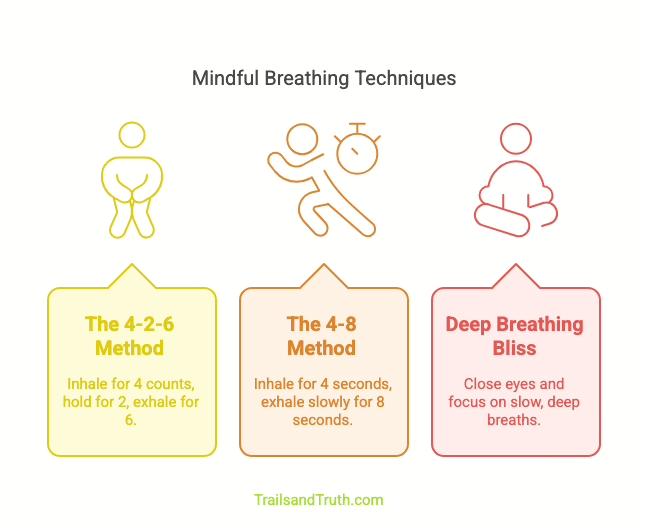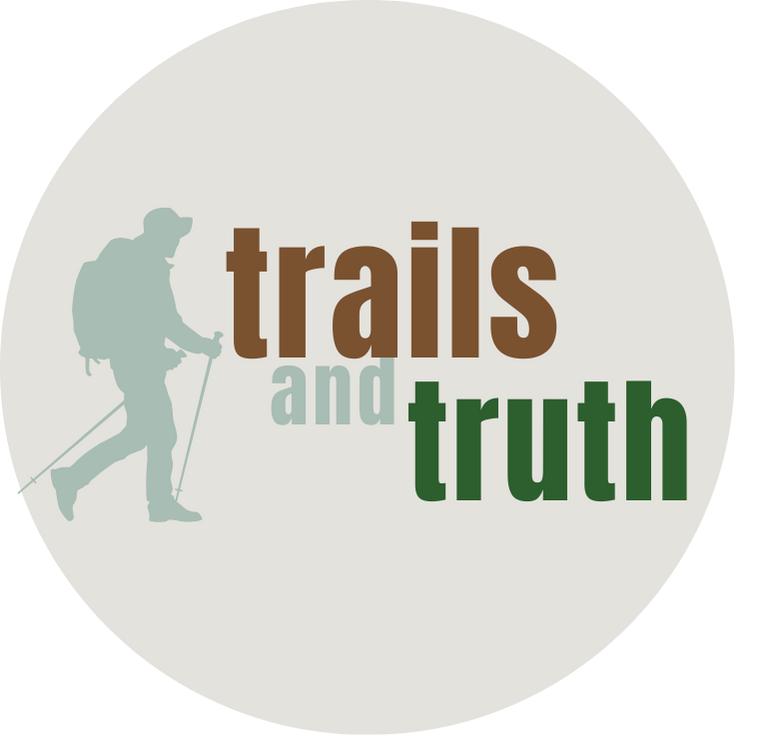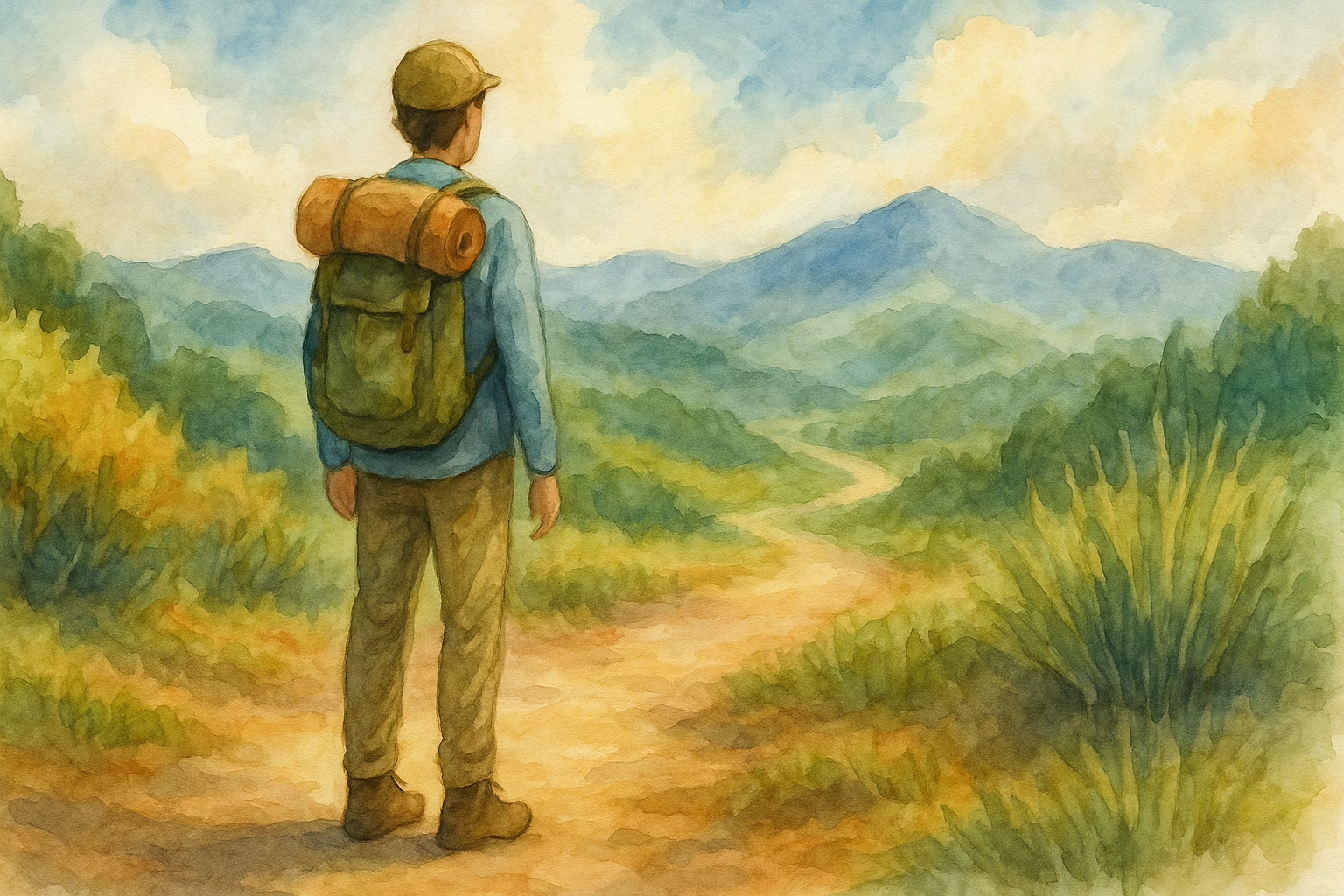Hiking and Mindfulness: Simple Practices to Enhance Your Trail Experience
TL;DR for People in a Hurry
Hiking isn’t just exercise. It’s a powerful form of mindfulness that can boost mental and physical health. Science shows that mindful hiking can:
- Lower stress hormones like cortisol
- Ease anxiety and depression symptoms
- Improve sleep, focus, creativity, and emotional resilience
Simple practices like mindful breathing, sensory awareness, and nature journaling can transform your hikes into powerful mental resets.
You don’t have to hike far or meditate perfectly. Even 15 to 30 minutes outdoors with presence can make a real difference.
Start small. Breathe, notice, connect. The trail (and the peace it offers) is always waiting.
Introduction: The Power of Combining Hiking and Mindfulness
Hiking offers more than just a workout or a photo opportunity. It offers something much deeper: mental rejuvenation.
Beyond the burned calories and breathtaking views, hiking provides a powerful opportunity to reconnect with yourself, slow down your mind, and find a calm that’s hard to access in everyday life.
When combined with mindfulness, hiking becomes even more transformative. So-called mindful hiking is the practice of staying fully present, both physically and mentally, while on the trail.
It’s about noticing the rhythm of your breath, the feeling of your feet meeting the earth, and the quiet symphony of sounds, scents, and textures all around you.
Instead of letting your mind wander to work emails or tomorrow’s errands, mindful hiking invites you to root yourself in the here and now.
In this post, we’ll explore the science-backed mental and physical health benefits of mindful hiking, drawing on research into practices like forest bathing and mindful walking.
You’ll also find simple, practical techniques you can start using immediately, whether you’re heading out for a quick walk in the woods or planning a full-day trek.
Mindfulness on the trail doesn’t require perfection. It only asks that you show up, pay attention, and give yourself the gift of being fully present.
Let’s dive in.
Section 1: The Science-Backed Benefits of Mindful Hiking
Mindful hiking isn’t just a feel-good ‘woo-woo’ idea. It’s a practice that’s increasingly backed by hard science.
Studies show that spending mindful time in nature (whether through structured practices like forest bathing or simple conscious walking) offers significant benefits for both physical and mental health.
Research on forest bathing (Shinrin-yoku) reveals impressive physiological effects:
Participants consistently show lower blood pressure, reduced heart rate, decreased cortisol levels, and improved immune function after time spent engaging their senses in natural environments.
Mindful exposure to nature also correlates with better sleep quality and reduced symptoms of anxiety and depression.
Beyond the physical markers, mindful hiking offers psychological relief that many describe as immediate and profound. Consciously immersing yourself in natural surroundings helps disconnect from daily stressors, reduces the overstimulation caused by constant technology use, and creates a sense of peace that can feel rare in modern life.
Research shows that chronic exposure to technology, especially the ‘rapid-fire’ stimulation of smartphones, can heighten anxiety, shorten attention spans, and increase emotional fatigue.
Mindful hiking offers a deliberate break from this constant digital noise, helping reset both the mind and the body.
Even short periods of mindful time outdoors, i.e., as little as 15 to 30 minutes, can yield noticeable improvements in mood, cognitive clarity, and emotional resilience.
In short, mindful hiking strengthens both body and mind, offering a natural antidote to the stress, burnout, and disconnection so common in our modern lives.
Section 2: Simple Mindfulness Practices for the Trail
Mindful hiking doesn’t mean you have to be hyper-focused every second.
Instead, it’s about weaving small, intentional practices into your hike to ground yourself in the present moment.
Before beginning these mindfulness practices, consider silencing your phone or placing it on airplane mode.
Constant notifications and digital stimulation pull your attention away from the present moment, making it harder to experience the full mental reset that nature offers.
Here are some simple techniques you can start using right away:
Mindful Breathing Techniques
- The 4-2-6 Method: Inhale through your nose for 4 counts, hold for 2 counts, and exhale for 6 counts through thinly pursed lips.
- The 4-8 Method: Inhale for 4 seconds, exhale slowly for 8 seconds to activate your relaxation response.
- Deep Breathing Bliss: Pause on the trail, close your eyes, and focus on slow, deep breaths.
- (If you choose to close your eyes, make sure you do so in a safe place!)

Sensory Awareness Exercises
- Five Senses Check-In: Notice 5 things you see, 4 you touch, 3 you hear, 2 you smell, 1 you taste.
- Nature’s Symphony Meditation: Sit quietly and immerse yourself in the natural sounds.
- Touch Exploration: Feel different textures: tree bark, stones, breeze. This has been shown to slow brain waves and boost creativity.
Mindful Walking Practices
- Attention to Walking: Focus on the physical sensations of walking.
- Breath-Step Coordination: Match breathing rhythm to your steps.
- Forest Bathing Visualization: Visualize the earth supporting you and helping you heal.
Section 3: Deepening the Experience Through Journaling
If hiking anchors you to the present, journaling helps you capture and reflect on that experience.
Combining mindful hiking with nature journaling creates a powerful loop. What you notice on the trail deepens your mindfulness, and what you write later reinforces it.
Research shows that journaling alone can improve emotional regulation, enhance memory, and even boost immune function. Pair this with time outdoors, and the benefits become even stronger. 💪🏽
Here are a few simple journaling techniques you can weave into your mindful hiking routine:
Nature Observation
- Record date, weather, location, and one thing you noticed.
Nature Memory
- Recall and write about a powerful memory connected to your time in nature.
Sensory Prompts
- Organize your writing around senses—what you saw, heard, touched, or smelled.
Reflection Questions
- After your hike, ask yourself:
- How did my mood shift?
- What challenges did I overcome?
- What insights surfaced?
Pro-tip: Use the voice recorder app on your phone to talk to yourself while hiking (when you’re not completely out of breath, that is 🙂).
This was a little weird at first, but I have found this to be a truly insightful and liberating practice. I look forward to doing this on many of my hikes now.
You can then even go as far as using an AI tool to transcribe and summarize your audio recording for you later when you get home (hey, I thought we were trying to get away from technology? 🤦♂️)
Section 4: How to Start Mindful Hiking Without Feeling Overwhelmed
Mindfulness doesn’t require perfection. Even as little as fifteen to thirty minutes of intentional presence can lower stress and lift mood.
Tips for beginners:
- Pick one simple practice.
- Set a basic intention.
- Let go of judgment.
- Start small. Local parks not only count, they rock!
- Silence your phone to minimize distractions and digital stimulation.
Consistency is key. Progress happens step by step.
Conclusion: Hiking as a Gateway to Inner Calm and Outer Connection
At its core, hiking is already a form of healing.
Every step forward, every breath of fresh air, every moment spent surrounded by nature offers a quiet invitation: don’t worry about yesterday or tomorrow, just be here now.
When you intentionally add mindfulness to your time outdoors, that invitation becomes even more powerful. It shifts hiking from a physical activity into a full-body, full-mind experience of presence and renewal.
The science is clear. Mindful time on the trail can lower stress hormones, improve sleep, reduce symptoms of anxiety and depression, and foster emotional resilience.
You don’t have to hike far, hike perfectly, or practice mindfulness every second to experience these benefits. You just have to start.
One breath. One footstep. One moment of noticing the world around you instead of rushing through it.
The trail is always waiting. And every time you step onto it with awareness, you take a step closer… to calm, to connection, and to a quieter, more grounded version of yourself.
FAQ: Mindful Hiking
Do I have to meditate while hiking to be mindful?
No. Mindful hiking isn’t about sitting cross-legged on a trail (though you certainly could if you like). It’s about small acts of presence, like noticing your breath, tuning into the sounds of nature, or feeling the ground beneath your feet. Even a few mindful moments during a hike can have real benefits.
How long does it take to notice the benefits?
You may start to feel calmer and more present after just 15 to 30 minutes outdoors. Research shows that even short periods in nature can lower stress hormones and lift mood.
Can I practice mindful hiking with a group?
Absolutely. While solo hiking allows for deep reflection, group hikes can also be mindful. You might walk together in silence for a stretch, focus on shared sensory experiences, or take a few minutes apart at scenic spots to reconnect with your own awareness.
What if my mind keeps wandering while I hike?
That’s completely normal. Mindfulness isn’t about keeping your mind blank; it’s about noticing when it wanders and gently bringing it back. Treat your attention like a curious traveler, not a strict taskmaster. Every time you notice and return, you’re practicing mindfulness.
Is journaling necessary to make hiking mindful?
Journaling isn’t required, but it can deepen the experience. Writing about your hikes can help you process emotions, notice patterns, and create lasting memories. Even a few lines after a hike can help anchor the benefits of mindful time outside.

